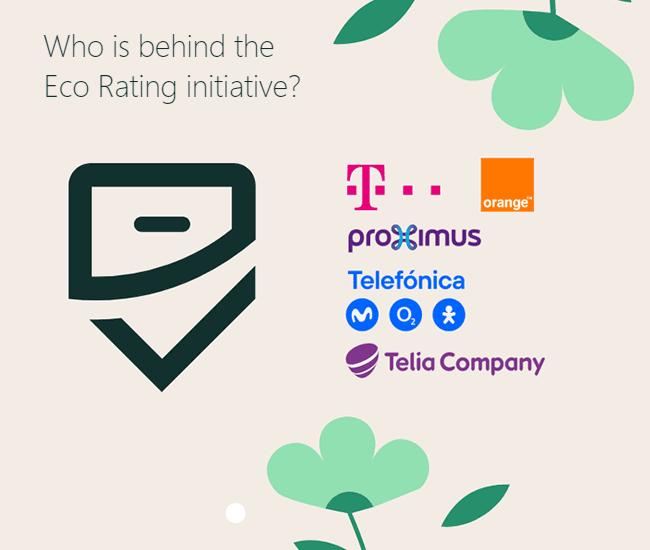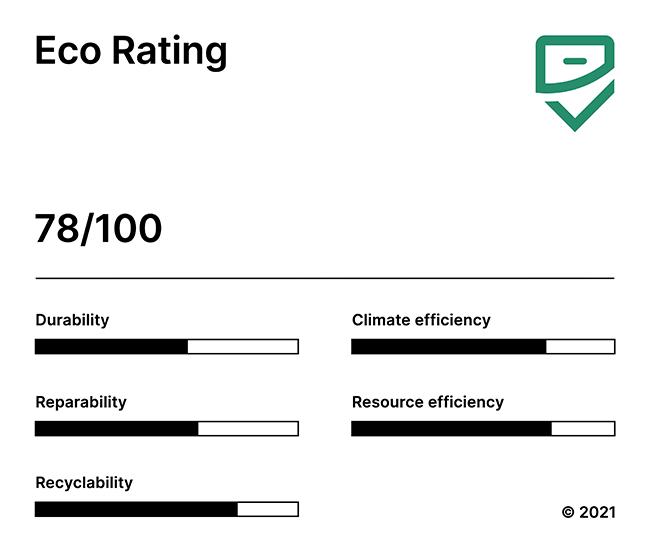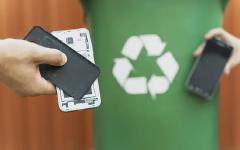Categories
How Eco Ratings can help you choose your next phone
5 minute read

Did you know your phone may have an Eco Rating, telling you how sustainable it is from manufacturing, through its lifespan?
According to some of your comments in our community, the answer is ‘no’:
“I can honestly say I have no idea whatsoever. But it would be great to know so I’m going to find out.”
That’s the spirit, bobrobinson. And that’s exactly what we’re going to do today: find out more.
Yes, Eco Ratings are fairly new (especially in the UK), and they haven’t been talked about much. So we’re here to help, by breaking down what this score means, and how it could help you make more sustainable choices on your next phone purchase.
What is a phone Eco Rating?

Right, let’s start with a bit of history. In 2021, a group of telecoms companies from across Europe decided customers were being left in the dark about how sustainable their devices were.
So, they decided to create their own, independent rating system. And just like that, the Eco Rating system was born.
By the start of 2022, over a dozen phone manufacturers had signed up to take part, sharing info about their products in order to get an Eco Rating.
How does a phone Eco Rating work?
The Eco Rating looks at new mobile phones and scores them in five categories:
- Durability: the longer the phone (and the battery) lasts, the longer it will take to wind up as e-waste.
- Repairability: not only should the phone be easy to fix, it should also have the potential to upgrade, so that it can last as long as possible.
- Recyclability: when the phone’s life is over, how much of it can be recycled, and how easily?
- Climate efficiency: from the manufacturing process to the daily use of the phone, is the manufacturer doing everything they can to cut carbon emissions?
- Resource efficiency: and speaking of the manufacturing process, does the phone make use of recycled materials, or is it depleting natural resources?
Each one of those five areas is assessed according to the five stages of a mobile’s lifespan. These are:
- Raw materials: see how many rare minerals are needed to make just one mobile phone.
- Manufacturing: bearing in mind that up to 80% of a phone’s total CO2 emissions are created before it even leaves the factory.
- Transport: let’s not forget the CO2 released on the phone’s journey from the factory to your pocket.
- Usage and spare parts: this is where that durability score comes in useful. How long will your phone last, and how often will it need parts to be replaced?
- End of life: finally, what happens when it’s time to retire the phone? Will it end up in landfill, or will there be a happy afterlife?
Based on those five factors, each category gets a score out of 100. Then the combination of these five category scores makes up the final score, also out of 100.
Why was the phone Eco Rating developed?

The Eco Rating was created with three aims:
- To give customers more information about the sustainability credentials of the phones they buy.
- To raise awareness and create transparency in the mobile phone industry.
- And to get manufacturers competing to make more sustainable phones.
There’s still a long way to go. Especially since some of the biggest manufacturers are yet to apply for an Eco Rating.
But, as more and more manufacturers start to volunteer themselves for Eco Ratings, there will be more and more reasons to be optimistic.
And the great thing is that the Eco Rating system is open to all phone network operators worldwide. giffgaff was one of the first UK networks to start supporting the scheme, showing Eco Ratings for phones we sell that have been rated.
We think it’s a great initiative and brings us one step closer to helping to create a more sustainable and circular economy for mobile phones.
How important is the Eco Rating?
By the end of 2021, 180 devices had already been rated. And hopefully, many more will follow.
Meanwhile, you, the consumer, can benefit from learning about Eco Ratings too.
The next time you compare mobile phones (whether new or refurbished), be sure to look up their Eco Ratings. It may help you to make a more sustainable choice.
Where can I find the Eco Rating for my phone?
Sadly, right now, not all phones have an Eco Rating. And they can be pretty easy to miss on some sites.
Assuming your mobile phone has an Eco Rating, it can usually be found in the manufacturer’s specifications. It may be written on the manufacturer’s website under the technical details for the phone, or in the manufacturer’s handbook that came with the phone.
At giffgaff, we currently show the Eco Rating (for any phones that have it) in the full list of specifications found on the phone’s details page. If the phone has an Eco Rating you’ll find a score like this one for the Samsung A22 5G:

As far as we know, there’s no single online source that lists every Eco Rating for every phone. But perhaps we’ve missed something? If you’ve seen one, let us know in the giffgaff community.
Where can you learn more?
The best place to find out more information is on the official Eco Ratings website. Here you’ll find out everything you need to know, including which manufacturers have signed up.
And if you’re looking to start your journey towards buying more sustainable phones, you’ve come to the right place. Check out giffgaff’s range of refurbished phones today.





